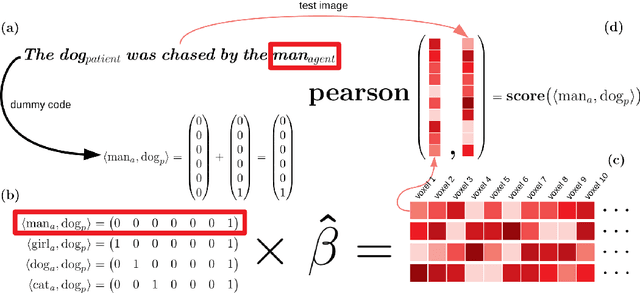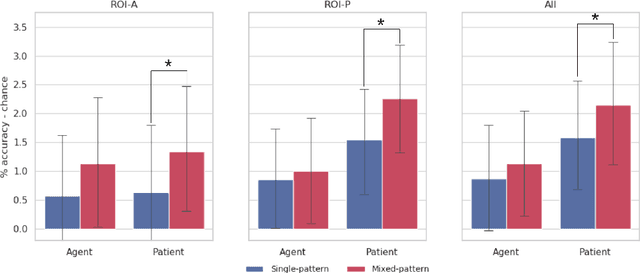Distributed neural encoding of binding to thematic roles
Paper and Code
Oct 24, 2021



A framework and method are proposed for the study of constituent composition in fMRI. The method produces estimates of neural patterns encoding complex linguistic structures, under the assumption that the contributions of individual constituents are additive. Like usual techniques for modeling compositional structure in fMRI, the proposed method employs pattern superposition to synthesize complex structures from their parts. Unlike these techniques, superpositions are sensitive to the structural positions of constituents, making them irreducible to structure-indiscriminate ("bag-of-words") models of composition. Reanalyzing data from a study by Frankland and Greene (2015), it is shown that comparison of neural predictive models with differing specifications can illuminate aspects of neural representational contents that are not apparent when composition is not modelled. The results indicate that the neural instantiations of the binding of fillers to thematic roles in a sentence are non-orthogonal, and therefore spatially overlapping.
 Add to Chrome
Add to Chrome Add to Firefox
Add to Firefox Add to Edge
Add to Edge